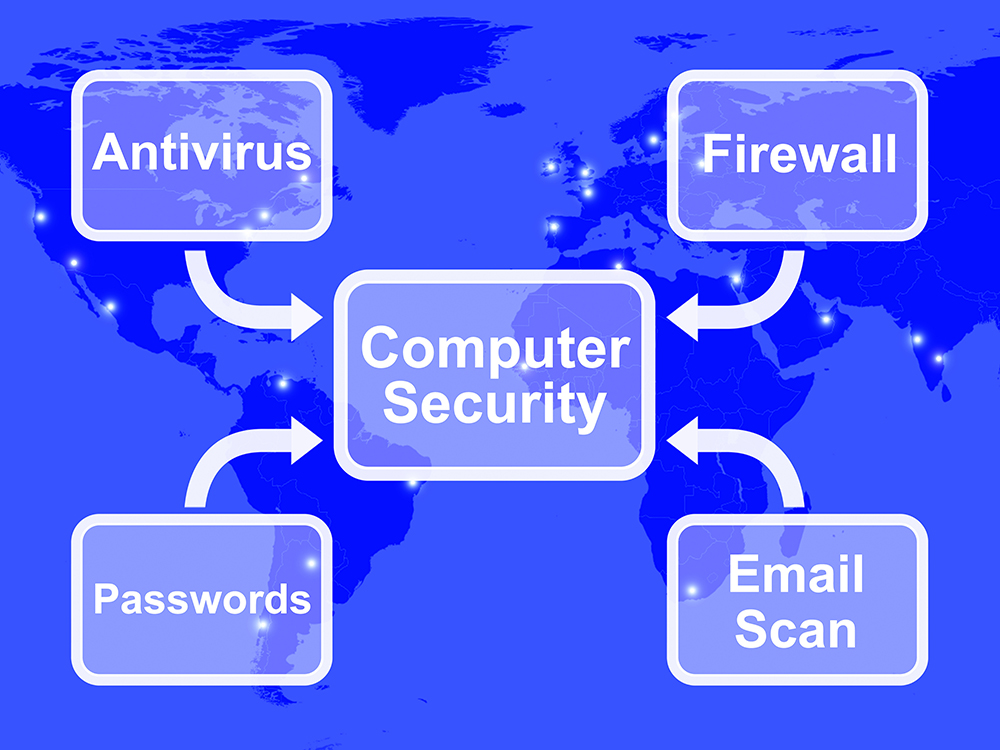Computer security is essential to your business, but do you have a security incident handling guide? If you are a small business owner, you must know what to do in the event of an attack or breach. We’ll cover the types of incidents and the expected response process for each one. We’ll also discuss post-incident activities and how to prevent them from happening again. Finally, we’ll cover what computer security incident response plan you’ll need and how to implement it.
The information provided here can be used by anyone who needs to handle a cybersecurity incident. It’s not just limited to IT professionals; this document aims to guide anyone who uses computers at work.
Table of Contents
What are Computer Security Incidents?
A computer security incident occurs whenever unauthorized activity occurs within your organization’s computing environment. These events include malicious software, hardware failures, human error, and many others. They could happen anywhere—from inside your office building to across the globe. Some of the most severe incidents occur outside your company’s physical location. Cyberattacks often involve multiple parties working together over long periods. Some examples include:
- Malicious Software – An attacker uses malware to gain control of your systems and steal sensitive information. Examples include keyloggers, Trojan horses, rootkits, backdoors, botnets, spamming programs, and much more.
- Human Error – A user makes mistakes while using their device. Examples include accidentally clicking links in email messages, downloading files without reading them first, opening attachments sent by strangers, and installing applications from untrusted sources.
- Social Engineering Attacks – Attackers use deception techniques to trick users into giving up confidential information. Phishers send out fake emails asking recipients to click on links, leading to websites where attackers collect usernames and passwords. Spammers try to get people to open unsolicited emails containing harmful content. Ransomware locks down infected devices until victims pay money to unlock them. Hacktivists perform acts of vandalism against companies or governments. All of these tactics rely on getting people to give up personal details. Spear-Phishing Attacks – Spear-phishing involves sending targeted emails that appear legitimate but contain hidden commands designed to infect recipient machines. Once an employee clicks on one of these links, hackers have full remote access to their device.
- Denial of Service Attacks – DDoS attacks are intended to make it difficult for organizations to function normally. By flooding networks with traffic, attackers prevent authorized users from accessing services and resources. Distributed denial of service attacks floods a network with data packets causing slowdowns or crashes. This type of attack usually requires several computers acting like “zombies” to participate to be successful.
- Malvertising – Malvertisements are advertisements embedded directly into web pages. When visitors view these ads, they download additional code onto their browsers, allowing attackers to track what sites they visit.
Types of Threats
There are two main types of threats you may encounter when dealing with cybercrime:
External Threats
Viruses, worms, spyware, adware, rootkits, backdoor programs, botnets, ransomware, and keyloggers can cause significant harm to the system if not removed quickly enough.
Internal Threats
On the flip side, internal threats occur within your organization’s IT infrastructure. Theft of Intellectual Property, Sabotage, Insider Threat, Denial of Service, Dumpster Diving, Social engineering, etc. These are all forms of unauthorized activity that occur inside your company.
What Should a Computer Security Incident Response Plan Include?
A well-developed computer security incident response plan includes several components such as policies, procedures, communication plans, risk assessment, mitigation strategies, recovery processes, etc. Developing a computer security incident response policy ensures that organizations comply with industry standards when responding to cyber threats. This ensures that organizations follow best practices while dealing with computer-related breaches. In addition, it also helps protect against legal liability.
Below are examples of each component included in a computer security incident response planning document.
Security Policies
Policies outline the organization’s overall approach to managing its IT infrastructure. They provide guidelines for implementing new technologies and services within an organization. For example, if you want to implement cloud computing solutions, you must first understand what cloud solution would work best for your company. You cannot simply deploy any cloud solution without understanding why it was chosen.
Incident Response Procedures
Procedures describe the steps involved in executing specific tasks. These documents define who does what during an emergency. If someone needs to shut down servers due to malware infection, these procedures clearly state who can do so.
Communication Plans
Communications plans outline communication methods between different departments within an organization. During an emergency, communications plans allow everyone on staff to know exactly where their responsibilities lie. An effective communications plan will enable people to respond quickly to emergencies and resolve problems.
Risk Assessment
Risk assessments identify potential vulnerabilities and weaknesses within an organization. Once identified, these weaknesses can be mitigated through various means. For instance, if your network contains outdated software, you could immediately update those programs and security tools. However, if you discover that specific applications have been hacked, you might consider upgrading those applications instead.
Mitigation Strategies
Mitigation strategies refer to actions taken to reduce or eliminate the likelihood of future attacks. Mitigating threats involves taking proactive measures to avoid them from occurring again. For example, if hackers gain access to sensitive data stored online, they may attempt to delete all traces of their activity. Doing this will make it more difficult for law enforcement officials to track them down later.
Recovery Processes
The last part of a computer security incident response process is recovery. Recovery refers to restoring normal operations after a breach occurs. It usually entails repairing damaged systems and removing malicious code while boosting security to prevent future incidents.
Incident Response Life Cycle
The incident response life cycle consists of six phases: preparation, detection, containment, eradication, recovery, and lessons learned. Each phase serves its purpose and helps prevent further damage. The IRLC also provides a framework for documenting activities throughout the entire event.
Preparation Phase
The first stage is the preparation phase which consists of developing models for incident response, guidelines for incident handling, choosing incident response personnel, training to protect against potential incidents, and improving incident response infrastructure. Please note that this is just the first phase of incident response to prepare your team for all types of incident handling activities.
Detection Phase
This second stage of the incident response life cycle is the detection phase, and it involves identifying the problem and determining which systems may have been affected. If it turns out that there were no advanced threats or malicious intent behind the attack, then the attacker could be an innocent bystander looking for something interesting to hack. However, if the hacker had bad intentions, he would likely try to cover his tracks. Therefore, detecting security breaches early on is critical because it allows you time to take action before more damage occurs.
Containment Phase
This third stage of the incident response lifecycle focuses on incident containment capabilities until they can be resolved. Containing means stopping the intruder from doing anything harmful while allowing him to continue operating normally. You’ll typically monitor network traffic and system processes to identify suspicious behavior during this period. Depending on the severity of the issue and the incidents’ impact, you may decide to shut off certain services or temporarily block access.
Eradication Phase
You remove the malware and clean up infected files in the eradication phase. Eradicating the infection ensures that all traces of the virus are removed so that it cannot reoccur. It’s often necessary to restore backups made before the outbreak. After the eradication step, you must test each server thoroughly to confirm that it hasn’t been compromised.
Recovery Phase
In the fifth stage, you recover from the incident. Recovery includes restoring data lost during the attack and fixing damaged servers. To ensure the site remains secure long-term, you will implement additional safeguards such as firewalls and antivirus software.
Lessons Learned Phase
Finally, the sixth and final stage is about learning from past mistakes. Lessons learned include reviewing procedures, policies, and standards to improve them. Also, consider implementing changes based on feedback received from customers and partners.
Incident Response Steps
The framework for incident response below provides guidance when dealing with cyber-attacks. The incident response cycle below will help guide you as you prepare for and handle a cybersecurity event:
Step 1: Determine Whether the Threat is Real or Imagined
Contact law enforcement immediately if you suspect someone else might try to harm your systems. They will investigate the claim and decide if charges must be filed against anyone involved. You also have options to protect yourself, such as purchasing antivirus software, installing firewalls, and updating operating systems.
If you believe the threat is imaginary, you can ignore it. However, doing so could lead to future problems. A false sense of security leads to complacency, making people vulnerable when faced with threats.
Step 2: Identify the Nature of the Imminent Threat
Once you’ve determined whether the threat is confirmed, you should consider its seriousness. If you think someone’s trying to hack into your company’s computers, you want to know exactly who did it and why. Are they after money or personal data? What kind of damage do they hope to cause? How long were they able to stay undetected? Do they pose a significant risk to other parts of your infrastructure?
Step 3: Take Appropriate Measures to Mitigate Risk
After determining the nature of the threat, you now have a clearer picture of what needs to happen next. It may involve hiring additional staff members, upgrading hardware, changing passwords, adding encryption, etc. Whatever steps you choose, make sure that all employees follow them diligently. Failure to comply could result in legal action being taken against those responsible.
To prevent further incidents like this, consider implementing a comprehensive cybersecurity policy. Make sure everyone knows what it says and understands its importance. Also, ensure that policies are enforced consistently across the board.
Step 4: Monitor and Respond as Necessary
As mentioned earlier, if you determine that there was no malicious intent behind the attack, you shouldn’t take immediate measures to stop it. Instead, monitor the situation closely over time. If necessary, contact law enforcement officials so that they can investigate the matter.
Incidents involving malware often go undetected until months later when someone notices something strange going on with their computer system. By then, it’s too late to do anything but try to clean up the mess. So keep an eye on things and act quickly if needed.
If your company does not have a dedicated team of experts handling these issues, you should hire at least one person for this task. They will need to know how to identify threats, respond appropriately, and report to upper management about everything that happens during the investigation process.
Step 5: Document Everything that Happens During Incident Response
Once all the above steps have been taken, write down every detail in a formalized record. Include details such as dates, times, names involved, etc. Please keep track of each step along the way so you can refer back to them whenever questions arise. It’s always best to start from scratch rather than trying to remember events from weeks ago.
Incident response models will help ensure everyone understands what needs to happen next. These documents are usually kept in a secure location where only authorized people can see them. Some companies even create special folders within shared drives just for storing records like this.
Step 6: Post-Incident Activity
So you’ve stamped out the threat and documented everything. What to do next? Your post-incident activity should not be returning to normal, at least not yet. You still need to perform some basic checks before returning to business as usual. For example, check logs regularly to verify that nothing else has happened since the incident occurred. This is especially important if any new users were added or existing ones changed their password after the fact.
Also, review security settings to make sure that they’re configured correctly. In addition, look into whether any sensitive information might have leaked due to the breach. Finally, conduct regular audits to find potential weaknesses to protect against future incidents and never stop training/testing your incident response team members.
The goal here isn’t necessarily to catch anyone red-handed; instead, you want to minimize the chances of future attacks by ensuring everything is working correctly. Once again, don’t forget to document everything!
Incident Response Roles/Incident Responders
If you’re new to incident reporting or want guidance on creating an incident response policy, here’s a quick overview of the roles played and their security incident response capabilities. Time is of the essence whenever there is a cybersecurity event. That’s why your incident response unit must be prepared 24/7.
Reporting Party
An RP is any individual or organization responsible for documenting an incident. Depending on their position concerning the incident, they may also be called the reporter, author, writer, etc. An RP can be either internal or external to the company. In most cases, they are employees working at the same location as the victim. However, if the incident involves multiple victims, each site owner would become an independent RP.
Investigator
The IT department typically assigns an investigator to investigate the cause of the incident. Their job is to determine whether the incident was malicious or accidental. If the latter, they document everything about the event so others can learn from it. Investigators often work closely with other departments and incident responders like Network Operations Center staff and other incident response personnel to ensure that all possible causes were considered before making a final determination.
Responsible Security Officer
A Responsible Security Officer is usually the person who has overall responsibility for maintaining the network infrastructure. They may delegate certain responsibilities to other individuals. For example, they could assign someone else to handle day-to-day maintenance tasks while retaining ultimate control over the entire environment.
Security Administrator
A Security Administrator is generally tasked with ensuring that the network remains secure against attacks. Their primary focus will likely include patching systems, monitoring logs, updating software, and performing routine system scans. The role of this individual varies widely based on what kind of business your company operates within. Some companies have dedicated administrators whose sole purpose is to keep things running smoothly, whereas others rely heavily on contractors to perform these duties. Regardless of which approach you take, ensure that there is always one person designated to manage the security aspects of the network. This way, no matter where you go, you’ll know whom to contact when something goes wrong.
Network Engineer / Systems Admin
The Network Engineer/Systems Admin is responsible for keeping the network operating correctly. Depending on their level of expertise, they may oversee the installation of hardware devices, configure them appropriately, monitor traffic flow, troubleshoot problems, and maintain backups. These incident responders should ideally be familiar with basic networking concepts such as IP addressing schemes, subnetting, routing protocols, firewall configurations, VPN technology, wireless LAN standards, and more.
Protect Against Future Problems
There isn’t much more that can be done once an initial breach has occurred. However, there are several ways to prevent similar problems from happening again. Here are three tips to consider:
1) Use Strong Passwords
Hackers love weak passwords because they’re easy to guess. Make sure that employees choose unique passwords for different accounts. Also, avoid using personal information or other easily guessed words. This could include birthdays, pet names, addresses, phone numbers, social media handles, etc.
2) Update Antivirus Software Regularly
Most antivirus software comes equipped with built-in protection features. But many users neglect to update their systems after installing fresh copies of the program. Hackers exploit vulnerabilities in older versions of popular applications to access sensitive data stored online. To stay safe, install updates immediately upon receiving new releases.
3) Encrypt Data Online
Encryption is used by businesses around the world to safeguard confidential files. The most common form of encryption involves encrypting individual bits. For example, AES 256-bit encryption uses 128 keys to scramble data into a single string of characters. When decrypted, however, the original file appears precisely as before.
4) Security Awareness Training
Although computer security incident handling guides are out there, computer awareness training for companies is still essential. With social engineering techniques on the rise, computer-related attacks are becoming more common, and employees need to be trained on what they should look out for. Training can include information about how attackers operate or gain access to computer systems containing sensitive data about your business.
Conclusion
Hackers have many motivations for attacking an individual or organization. Some seek fame or notoriety. At the same time, others see hacking as a means to support themselves financially. In some cases, however, hackers use their skills to commit crimes against individuals or companies. We hope that this computer security incident handling guide has been helpful! If you would like any additional help with your cyber security needs, don’t hesitate to get in touch with us or leave a message below. Now onto our user question of the week:
Q: How do you deal with phishing emails?
A: Phishing email scams are extremely dangerous because they often trick users into giving away personal details such as passwords, credit card numbers, bank account login credentials, etc. The scammers then sell those details online or through underground markets where people buy stolen identities. They sometimes try to steal money from victims’ accounts using fraudulent wire transfers. To avoid falling victim to these scams, always verify who sent you an email before clicking links or opening attachments. Never give out personal information over the phone unless you initiate the call. Always remember to never click on links inside spam messages.









Recent Comments